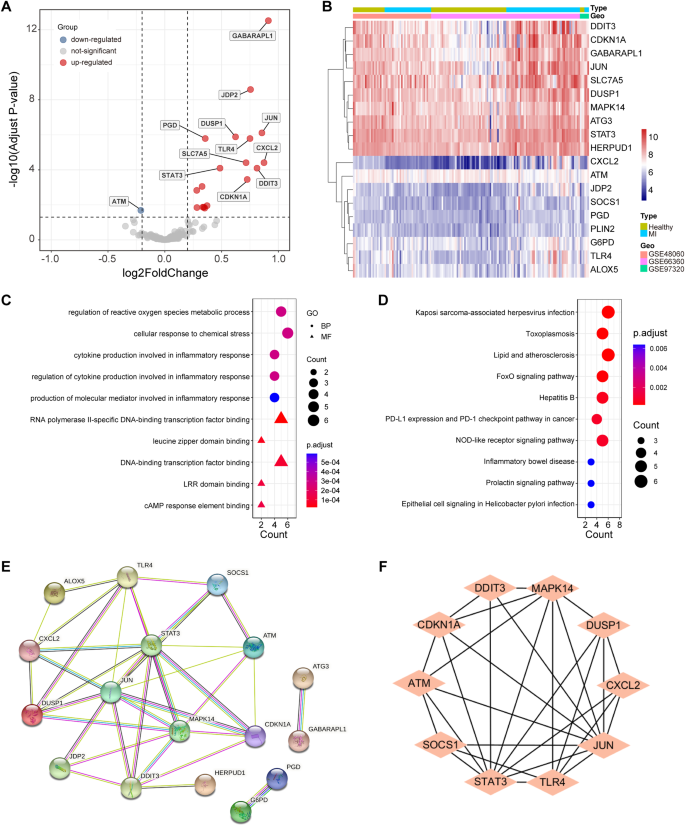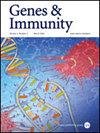Potential diagnostic biomarkers: 6 cuproptosis- and ferroptosis-related genes linking immune infiltration in acute myocardial infarction
IF 5
3区 医学
Q1 GENETICS & HEREDITY
引用次数: 0
Abstract
The current diagnostic biomarkers of acute myocardial infarction (AMI), troponins, lack specificity and exist as false positives in other non-cardiac diseases. Previous studies revealed that cuproptosis, ferroptosis, and immune infiltration are all involved in the development of AMI. We hypothesize that combining the analysis of cuproptosis, ferroptosis, and immune infiltration in AMI will help identify more precise diagnostic biomarkers. The results showed that a total of 19 cuproptosis- and ferroptosis-related genes (CFRGs) were differentially expressed between the healthy and AMI groups. Functional enrichment analysis showed that the differential CFRGs were mostly enriched in biological processes related to oxidative stress and the inflammatory response. The immune infiltration status analyzed by ssGSEA found elevated levels of macrophages, neutrophils, and CCR in AMI. Then, we screened 6 immune-related CFRGs (CXCL2, DDIT3, DUSP1, CDKN1A, TLR4, STAT3) to construct a nomogram for predicting AMI and validated it in the GSE109048 dataset. Moreover, we also identified 5 pivotal miRNAs and 10 candidate drugs that target the 6 feature genes. Finally, RT-qPCR analysis verified that all 6 feature genes were upregulated in both animals and patients. In conclusion, our study reveals the significance of immune-related CFRGs in AMI and provides new insights for AMI diagnosis and treatment.


潜在的诊断生物标志物:与急性心肌梗死免疫浸润有关的 6 个杯突症和铁突症相关基因
目前诊断急性心肌梗死(AMI)的生物标志物肌钙蛋白缺乏特异性,在其他非心脏疾病中存在假阳性。以前的研究表明,杯突、铁突和免疫浸润都与急性心肌梗死的发生有关。我们假设,结合分析 AMI 中的铜氧化酶、铁氧化酶和免疫浸润,将有助于确定更精确的诊断生物标志物。结果显示,共有 19 个杯突症和铁突症相关基因(CFRGs)在健康组和 AMI 组之间存在差异表达。功能富集分析表明,不同的CFRGs大多富集在与氧化应激和炎症反应相关的生物过程中。通过ssGSEA分析免疫浸润状态,发现AMI患者的巨噬细胞、中性粒细胞和CCR水平升高。然后,我们筛选了 6 个与免疫相关的 CFRGs(CXCL2、DDIT3、DUSP1、CDKN1A、TLR4、STAT3),构建了预测 AMI 的提名图,并在 GSE109048 数据集中进行了验证。此外,我们还发现了针对这 6 个特征基因的 5 个关键 miRNA 和 10 个候选药物。最后,RT-qPCR 分析验证了所有 6 个特征基因在动物和患者体内均上调。总之,我们的研究揭示了免疫相关 CFRGs 在 AMI 中的重要性,并为 AMI 的诊断和治疗提供了新的见解。
本文章由计算机程序翻译,如有差异,请以英文原文为准。
求助全文
约1分钟内获得全文
求助全文
来源期刊

Genes and immunity
医学-免疫学
CiteScore
8.90
自引率
4.00%
发文量
28
审稿时长
6-12 weeks
期刊介绍:
Genes & Immunity emphasizes studies investigating how genetic, genomic and functional variations affect immune cells and the immune system, and associated processes in the regulation of health and disease. It further highlights articles on the transcriptional and posttranslational control of gene products involved in signaling pathways regulating immune cells, and protective and destructive immune responses.
 求助内容:
求助内容: 应助结果提醒方式:
应助结果提醒方式:


